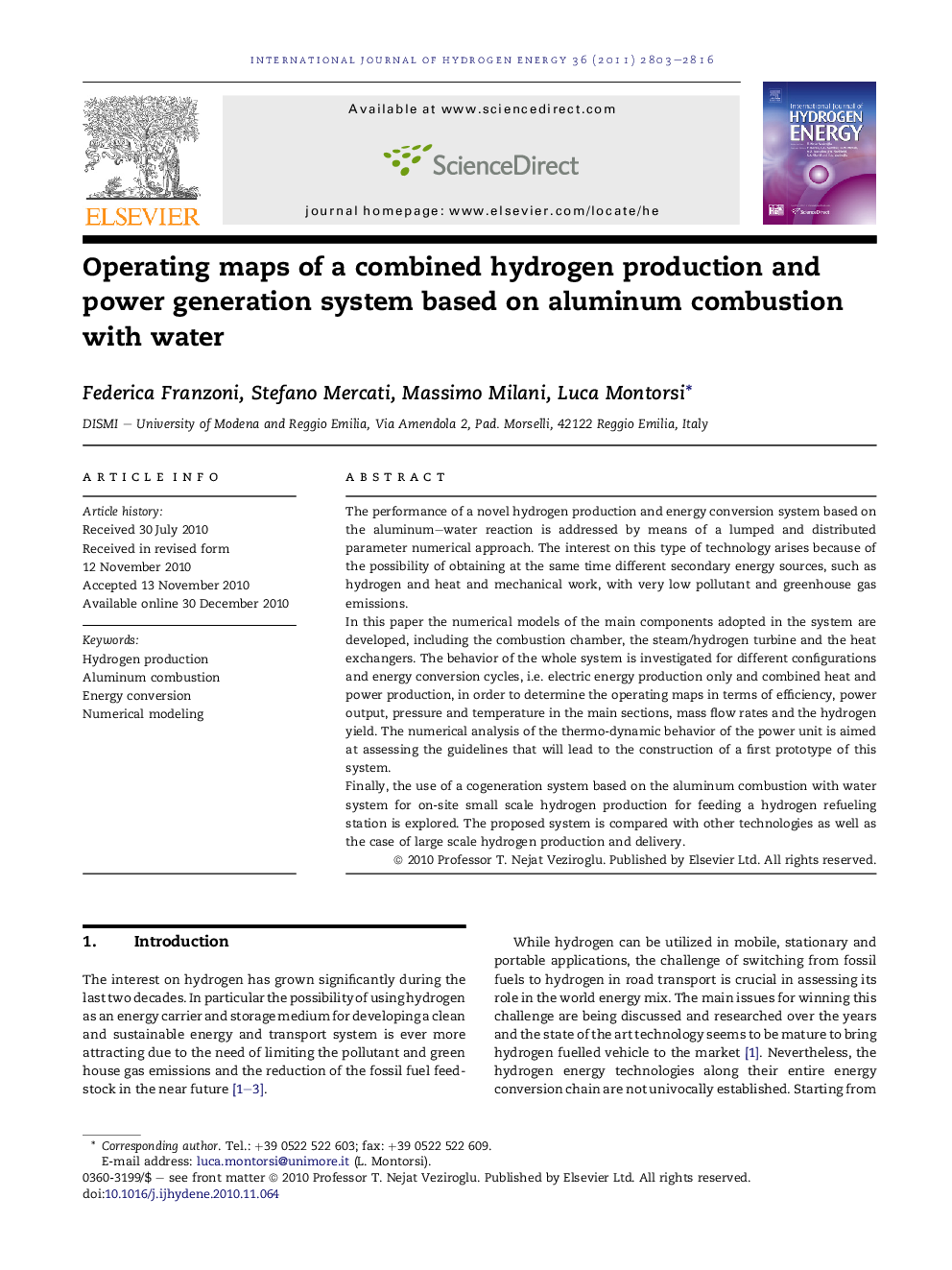| Article ID | Journal | Published Year | Pages | File Type |
|---|---|---|---|---|
| 1276394 | International Journal of Hydrogen Energy | 2011 | 14 Pages |
The performance of a novel hydrogen production and energy conversion system based on the aluminum–water reaction is addressed by means of a lumped and distributed parameter numerical approach. The interest on this type of technology arises because of the possibility of obtaining at the same time different secondary energy sources, such as hydrogen and heat and mechanical work, with very low pollutant and greenhouse gas emissions.In this paper the numerical models of the main components adopted in the system are developed, including the combustion chamber, the steam/hydrogen turbine and the heat exchangers. The behavior of the whole system is investigated for different configurations and energy conversion cycles, i.e. electric energy production only and combined heat and power production, in order to determine the operating maps in terms of efficiency, power output, pressure and temperature in the main sections, mass flow rates and the hydrogen yield. The numerical analysis of the thermo-dynamic behavior of the power unit is aimed at assessing the guidelines that will lead to the construction of a first prototype of this system.Finally, the use of a cogeneration system based on the aluminum combustion with water system for on-site small scale hydrogen production for feeding a hydrogen refueling station is explored. The proposed system is compared with other technologies as well as the case of large scale hydrogen production and delivery.
